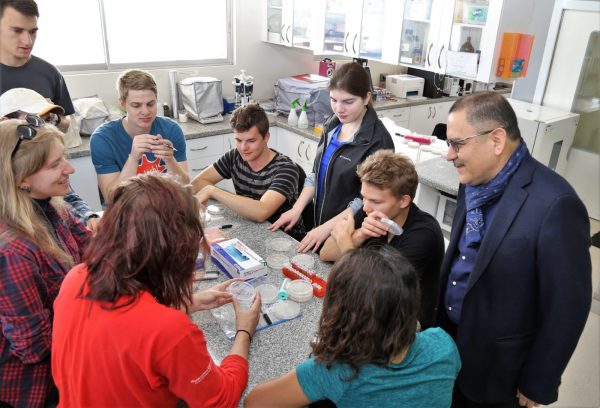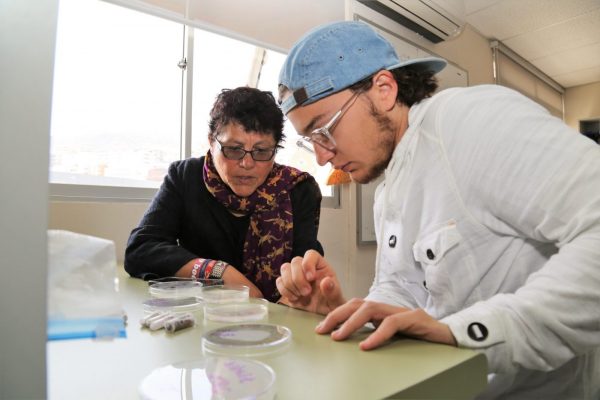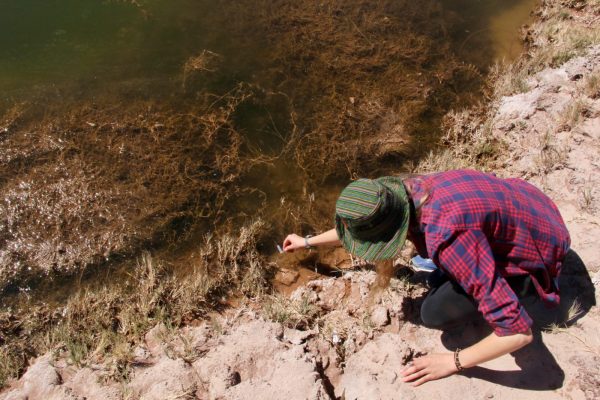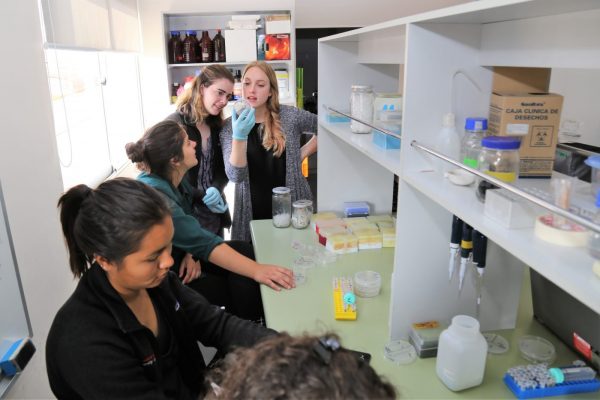Students Hunt for Bacteria—and Amazing Photos—in Chilean Desert
This summer, a group of Northeastern students explored Chile’s Atacama Desert on scales large and small—from photographing the picturesque landscapes, to searching for tiny bacteria to aid the discovery of new antibiotics—as part of a pioneering Dialogue of Civilizations program.
The barren, beautiful Atacama—the driest non-polar desert on Earth and possibly the oldest desert in the world—stretches about 41,000 square miles. It was there where students from many majors, ranging from computer science to chemical engineering to international affairs, spent a month surveying the desert’s bacterial diversity and capturing the desert’s scenery in photos.
Photos by Northeastern students Caroline Ghio and Daniel Rassaby, and by Elias Villarroel from the University of Antofagasta


Associate professor of biology Veronica Godoy-Carter led the dialogue program, which she described as a “very interdisciplinary effort.” The dialogue grew out of her own experience and research, which focuses on molecular microbiology and antibiotic resistance.
As a Chilean native who has visited the Atacama Desert a handful of times, Godoy-Carter realized the untapped potential to explore the desert for microbial discovery. So she developed the dialogue in which students could gather environmental samples in the desert and later analyze them in research labs at the University of Antofagasta in Chile for possible culturable bacteria. This work, which will continue now that the dialogue has completed, could enhance our knowledge of the desert’s bacteria diversity and aid the discovery of new antibiotics.
“No one has done this type of scientific survey there,” Godoy-Carter said, noting that the students also learned how to isolate bacteria that produces antibiotics. “So the students were very excited.”
The dialogue and the students’ work was even written up in a local newspaper.
As part of the dialogue, Ashley Hunt, a landscape photographer from the California Institute of the Arts, taught the students how to photograph their findings. The students traversed the desert in search of places to collect samples as well as capture powerful images, while contending with extreme temperatures that ranged from 80 degrees Fahrenheit during the day to below zero at night.


Caroline Ghio, E’21, said the experience exceeded her expectations, noting the opportunities to engage in a comprehensive research project while learning the basics of photography. “I’ve always been interested in biology,” said Ghio, a rising second-year chemical engineering major who is considering a career in health and medicine. “This was a great opportunity to engage in microbiology, and I knew it could help me learn a lot in a hands-on way and in an interesting setting.”
Daniel Rassaby, CIS’21, said he hadn’t taken a biology class since ninth grade, let alone studied microbiology, before participating in the dialogue. He also found that the two tracks—microbiology and photography—weren’t as unrelated as he originally thought.
“Microbiology and photography are distinct, but there are interesting connections between them,” explained Rassaby, a rising second-year computer science major. “We did some night photography shooting the stars. You can capture stars that you can’t see with naked eye. Similarly, in microbiology, you’re dealing with things you can’t see, and using tools to analyze them.”
Like Ghio, he’d never taken a photography course before. One aspect of the program that fascinated him was learning that you can’t capture everything in a photo; part of the art, he said, is deciding what does and doesn’t make it into the frame. Another aspect of photography that struck him was how you can capture the tranquility of the Atacama Desert, but not the silence.
“I wasn’t used to that,” he said of the silence. “Even growing up in the Montana countryside, it doesn’t get that quiet.”
